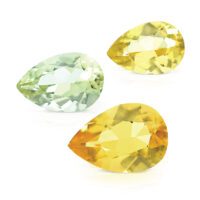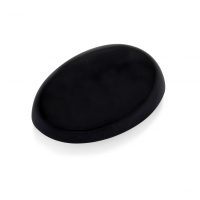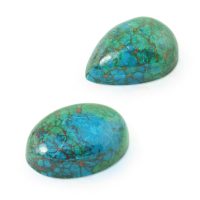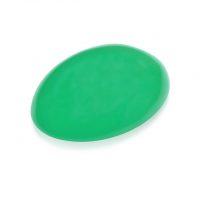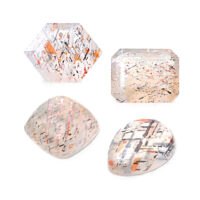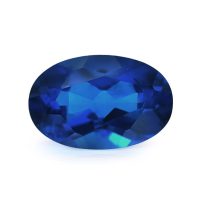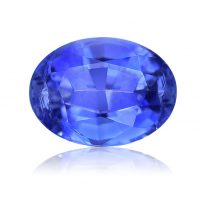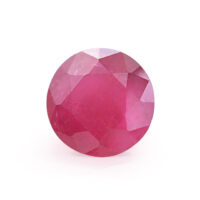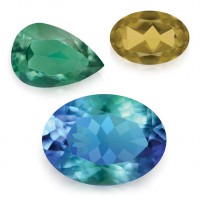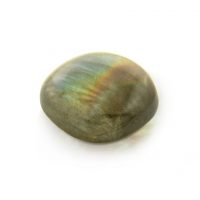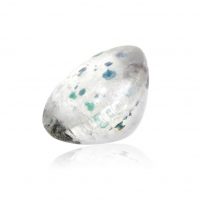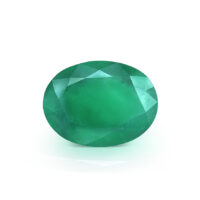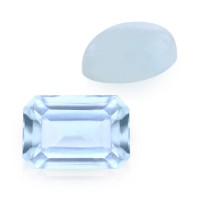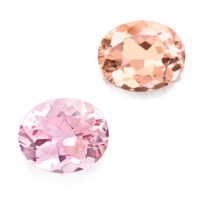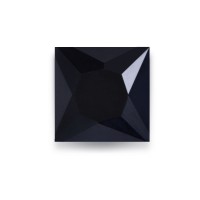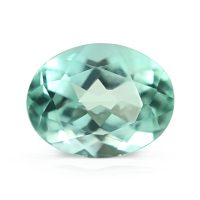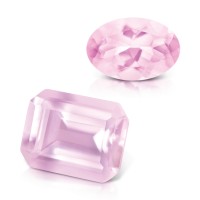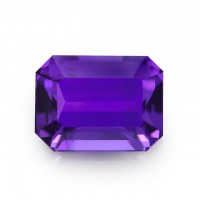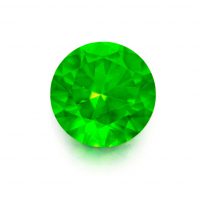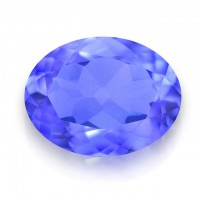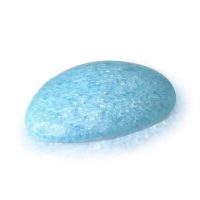

Kyanite are extremely rare and beautiful gemstones from Nepal, India and Tanzania.From Sapphire-esque blues to vibrant bluish-greens and rich ‘imperial’ oranges, Kyanite is a stunning jewelry gemstone.
Beauty
Once a secret of mineral collectors, Kyanite is today an increasingly popular jewelry gemstone. Color is the most important consideration in gemstones and the colors of Kyanite cover beautiful blues that have a visual resemblance to superb Blue Sapphires, vibrant bluish-greens that were initially thought to be Alexandrite, and rich ‘imperial’ oranges that are reminiscent of fine Spessartite Garnet. Kyanite is very challenging for the lapidary as it has hardness anisotropy, a directional hardness varying between 4 and 7.5, cleavage planes, pleochroism (colors and their intensity change when viewed from different angles), and thin crystals that are often zoned displaying an uneven color, making faceting quality critical. Our Kyanite is finished by expert lapidaries who carefully orientate the blade-like crystals in a manner that maximizes brilliance over weight, displaying a fine even color.
Even though Kyanite was named in 1789 from the Greek ‘kyanos’, meaning ‘blue’, it was sold to Europeans as Blue Sapphire until the turn of the 20th century and interestingly, is still occasionally found in parcels of Sapphires. Normally regarded as a blue gem, Kyanite also comes in brown, gray, green, orange, and white. Similar to Sapphire, Kyanite’s blues are caused by iron and titanium, hence the visual similarities, while its greens are caused by chromium and vanadium, the same elements responsible for the green in Emerald. Orange Kyanite’s color is due to small amounts of manganese, the same coloring element in Rubellite. Kyanite is a polymorph with Andalusite and Sillimanite, having the same composition, but a different crystal structure. Kyanite’s original named coined by German geologist Abraham G. Werner was Cyanite and it has also been called Disthene.
Rarity
While Kyanite is a mineral found in many countries, it is extremely difficult to find evenly colored crystals with a good clarity. Blue Kyanite’s most famed origin is the Kali Gandaki region of west central Nepal, whose deposits were only discovered in 1995. Impacting the marketplace since 2001, Nepal has become the most important source for fine Blue Kyanite visually similar to high-end Sapphires. Kali Gandaki Gorge is the deepest gorge on earth, making mining at this remote location difficult, impacting yield. First reported in 2008, Orange Kyanite comes from Nani Hill 35 kilometers from Loliondo in Tanzania’s Arusha Region, an area famed for yielding gemstones such as Tanzanite and Tsavorite. Literally located in the middle of nowhere, the place name was given by local Massai tribesmen. Green Kyanite is mined from deposits in the eastern Indian state of Odisha (formerly Orissa) discovered in 2009 and was initially thought to be a new variety of Alexandrite. With a geological scarcity accentuated by faceting difficulties, Kyanite is also one of the few gemstones that are not enhanced.
Durability & Care
Kyanite (Mohs’ Hardness: 4 – 7.5) should always be stored carefully to avoid scuffs and scratches. Clean with gentle soap and lukewarm water, scrubbing behind the gem with a very soft toothbrush as necessary. After cleaning, pat dry with a soft towel or chamois cloth.
Map Location



Click maps to enlarge






